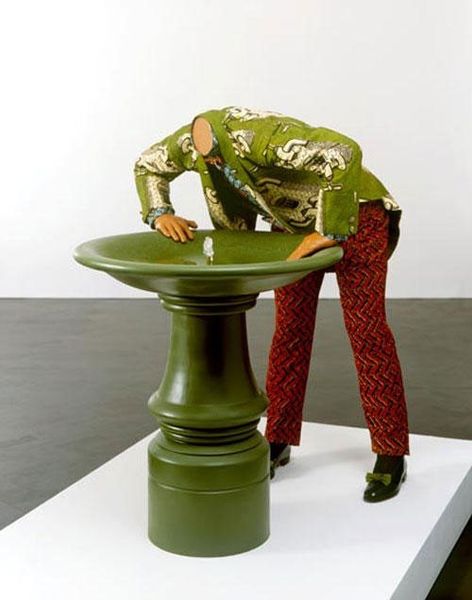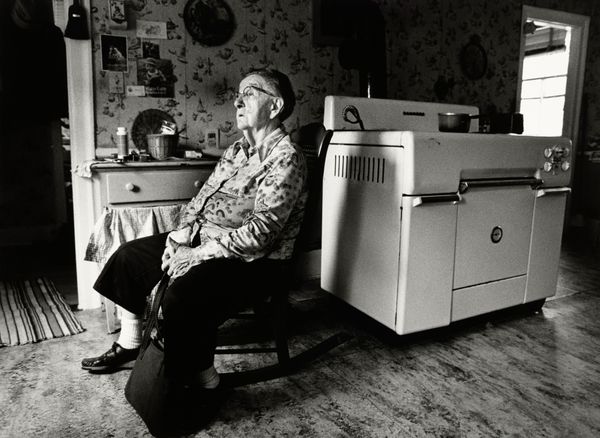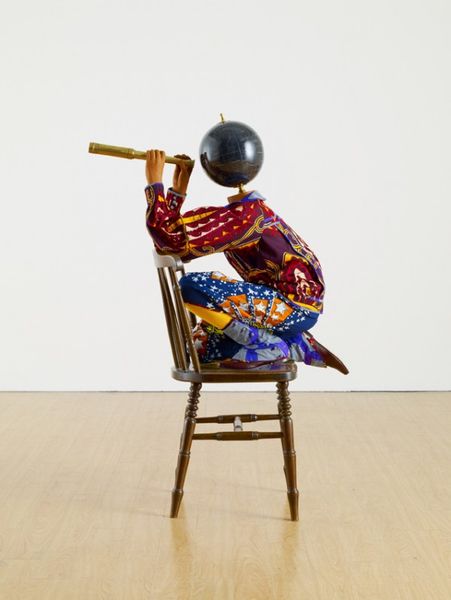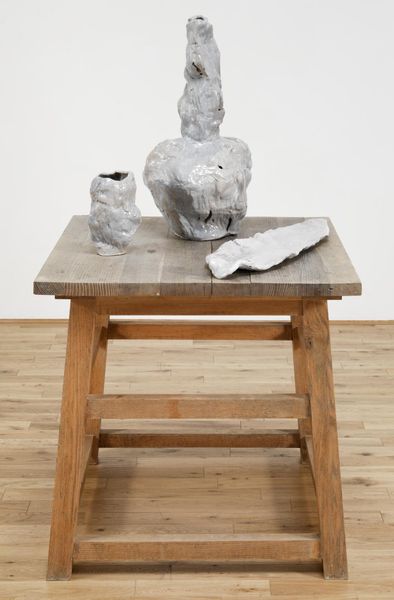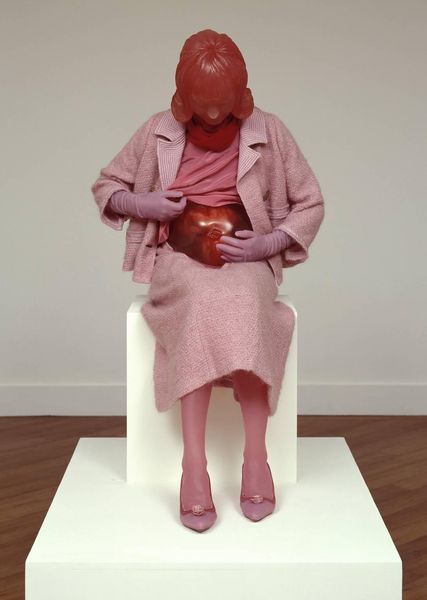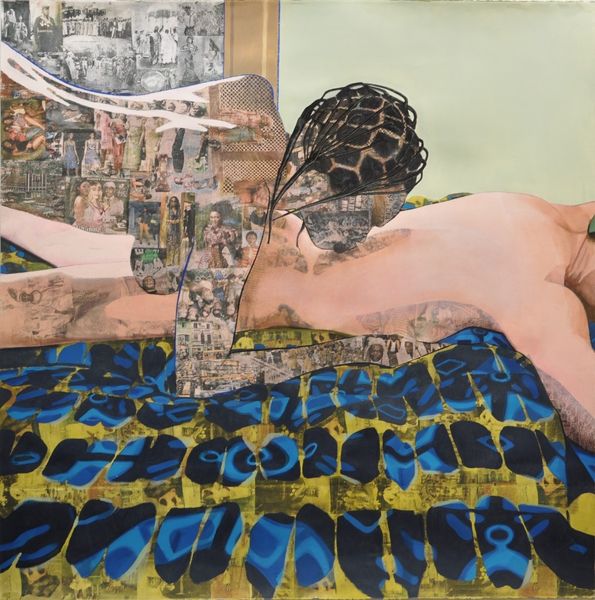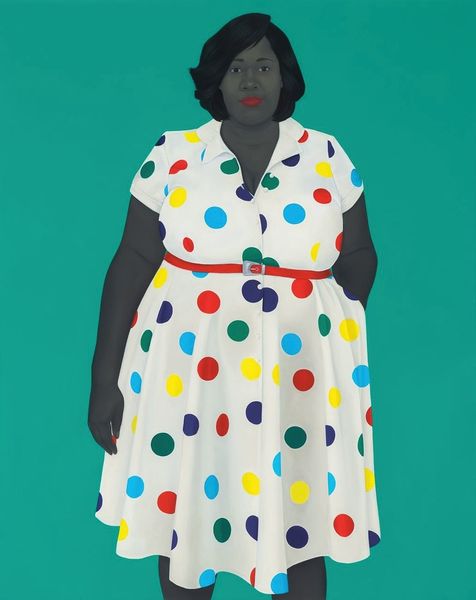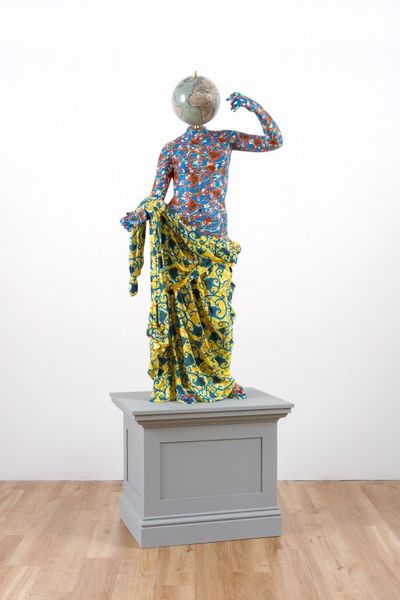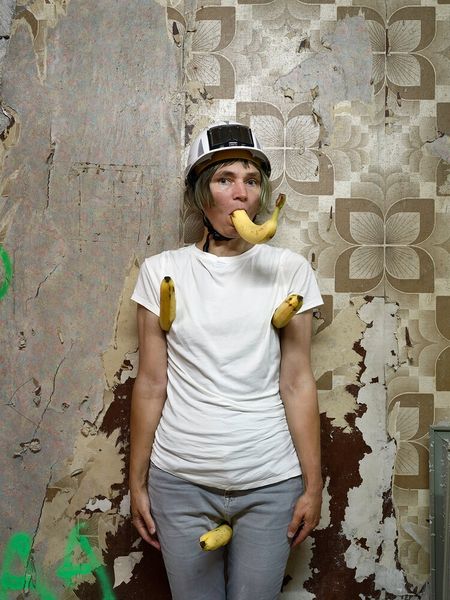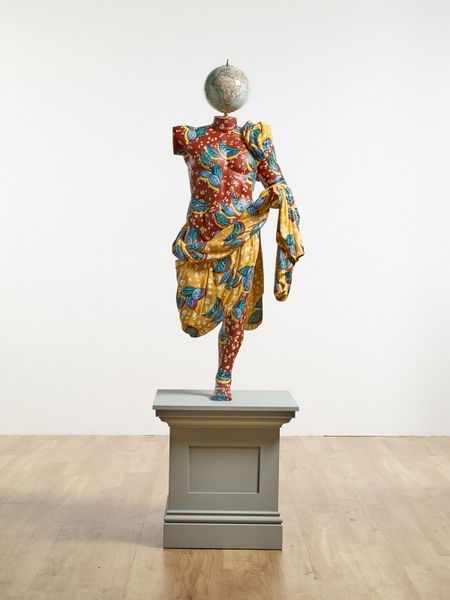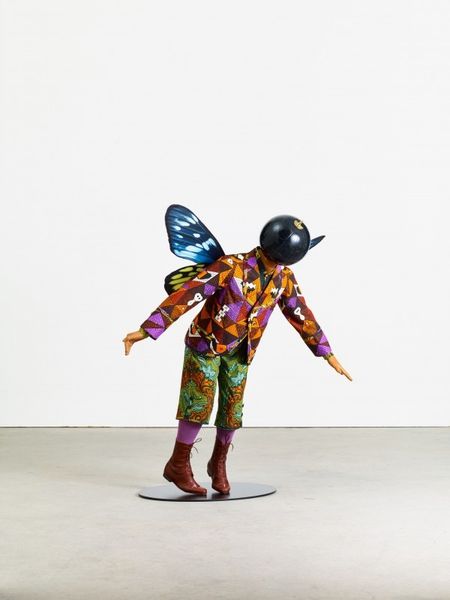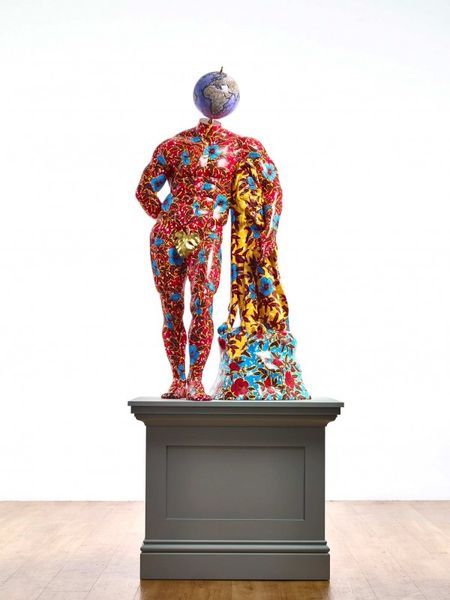
Dimensions: 127 x 76.2 cm
Copyright: Duane Hanson,Fair Use
Curator: Here we have Duane Hanson's 1971 sculpture, "Woman Eating," a powerful piece currently residing at the Smithsonian American Art Museum. Editor: The stark ordinariness of it is stunning. It’s almost unsettling to see this woman so realistically rendered, right down to the last detail of her dress and that paper bag at her feet. It's like catching a stranger in a moment of quiet solitude. Curator: Right. Hanson was a master of hyperrealism, working primarily with polyester resin, fiberglass, Bondo, and auto lacquer to create these figures. He often dressed them in everyday clothing and accessorized them with found objects to enhance the illusion. Look at that table cluttered with soda bottles, condiment containers, even a TV guide. The mundane items make this so authentic. Editor: It really challenges the notion of the "ideal" subject for art, doesn't it? Before this, you rarely saw art reflecting such everyday people engaged in something so unremarkable. Curator: Precisely! The whole sculpture pushes the boundaries of labor, from the woman's own physical being and consumption to the unseen labor behind every product in the scene. Each manufactured object—that handbag, those groceries, even the chair itself— represents a complex network of resources, production processes, and consumer culture. Editor: It's heavy—literally and figuratively. The way she hunches slightly, lost in her lunch and that TV guide... there's an aura of resignation. What’s going on with all those disposable items around the table? All that material adds up. It all seems so familiar somehow. It feels strangely sad, isolating even. Curator: I agree. Hanson had a way of highlighting the sometimes-harsh realities of American life, presenting it to us unvarnished and unflinching. His work raises questions about our own roles in a society driven by consumption, prompting reflection on the hidden narratives embedded within seemingly ordinary moments. Editor: This makes you look beyond the surface, into the broader system of creation and its many players, even the final consumers in a feedback loop of social processes. And now I want a sandwich. Curator: It’s hard to believe something so life-like could provoke such contemplation on the meaning and processes involved with just "eating" – it makes one re-evaluate the value and representation of daily life and what constitutes art.
Comments
No comments
Be the first to comment and join the conversation on the ultimate creative platform.
